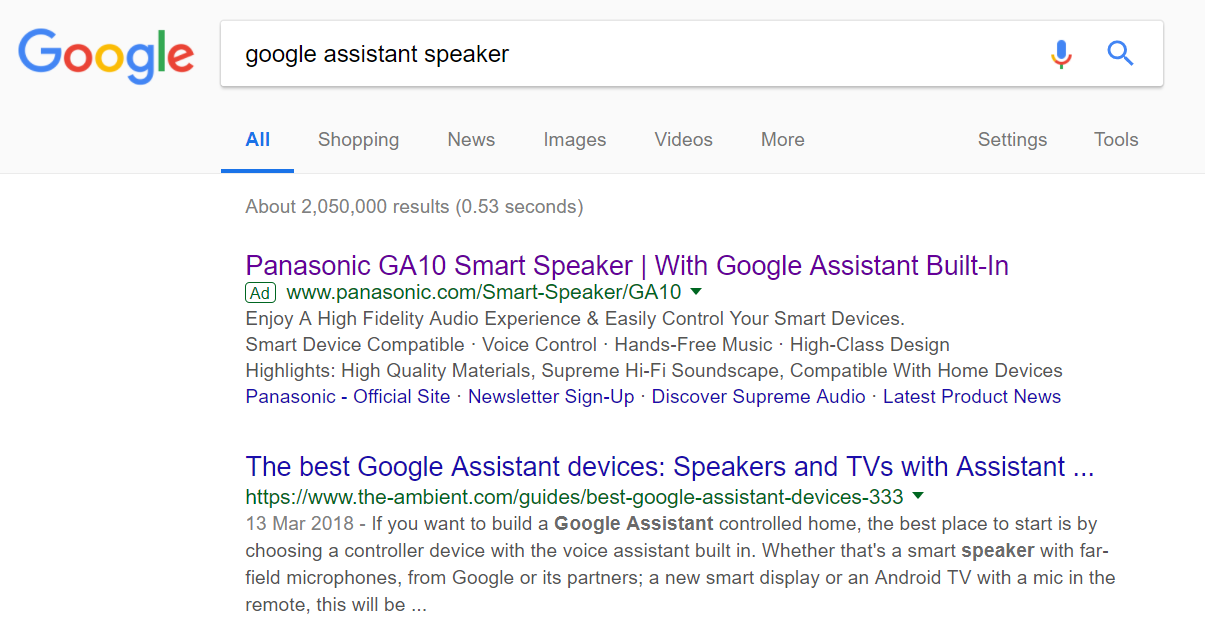The last PPC campaign I analysed in the ‘Analyse A Real PPC Campaign’ series was from Jetpack, who had a search advert with a heavy content title, whilst the landing page proved extremely effectively with call to action click through buttons at multiple sections as the web user scrolls down the page (so they can always convert once convinced to).
An area of technology that is gaining a lot of attention is with smart speakers. There is the Google Home and Alexa from Amazon. Looking into this market, here is an analysis of a PPC campaign from Panasonic.
To view Panasonic’s PPC search advert, I had to type into Google search UK, ‘google assistant speaker’: What is made clear, straight away, is the lack of competition for such a search phrase. This suggests that there is a lack of competitors (which is partly the case, albeit Google) and that Pansonic have invested heavily to spread the awareness of their new speaker. As it stood before, if I wanted a smart speaker with Google assistant, I would have purchased the Google Home – the fact I thought this confirms the fact Panasonic need to make clear that there are other speakers with the same software inside, and, potentially, better hardware.
What is made clear, straight away, is the lack of competition for such a search phrase. This suggests that there is a lack of competitors (which is partly the case, albeit Google) and that Pansonic have invested heavily to spread the awareness of their new speaker. As it stood before, if I wanted a smart speaker with Google assistant, I would have purchased the Google Home – the fact I thought this confirms the fact Panasonic need to make clear that there are other speakers with the same software inside, and, potentially, better hardware.
This search advert is all about the title, since it completely defines what the advert is all about. The description highlights the pros to the GA10 speaker, whilst there are extra links to potentially increase the click through action, although the links appear to be not the most useful or contextual.
After clicking on the above advert, I came to the following landing page:
- An image of the speaker in a home is a great way to show off the speaker as a stylish and ‘perfect for the home’ speaker.
- The image is complimented with features of the speaker, such as the integration of Google Assistant, as well as the potential for cashback.
- The left hand side of the image makes clear of the benefits of the speaker, allowing the web user to get a brief description as to why this Panasonic speaker is a good buy.
- Having a review below the product name helps to add confidence that this is a good speaker, although there are only 13 reviews at the moment (which is quite low for a product from Panasonic that will be sold worldwide).
- A slideshow at the bottom with images and videos helps to illustrate how the speaker could be used.
However, there is only one button to purchase the speaker, being the blue ‘SHOP’. It would have been more effective to have a larger buy button for the speaker, as well as at points below the fold of the landing page.




